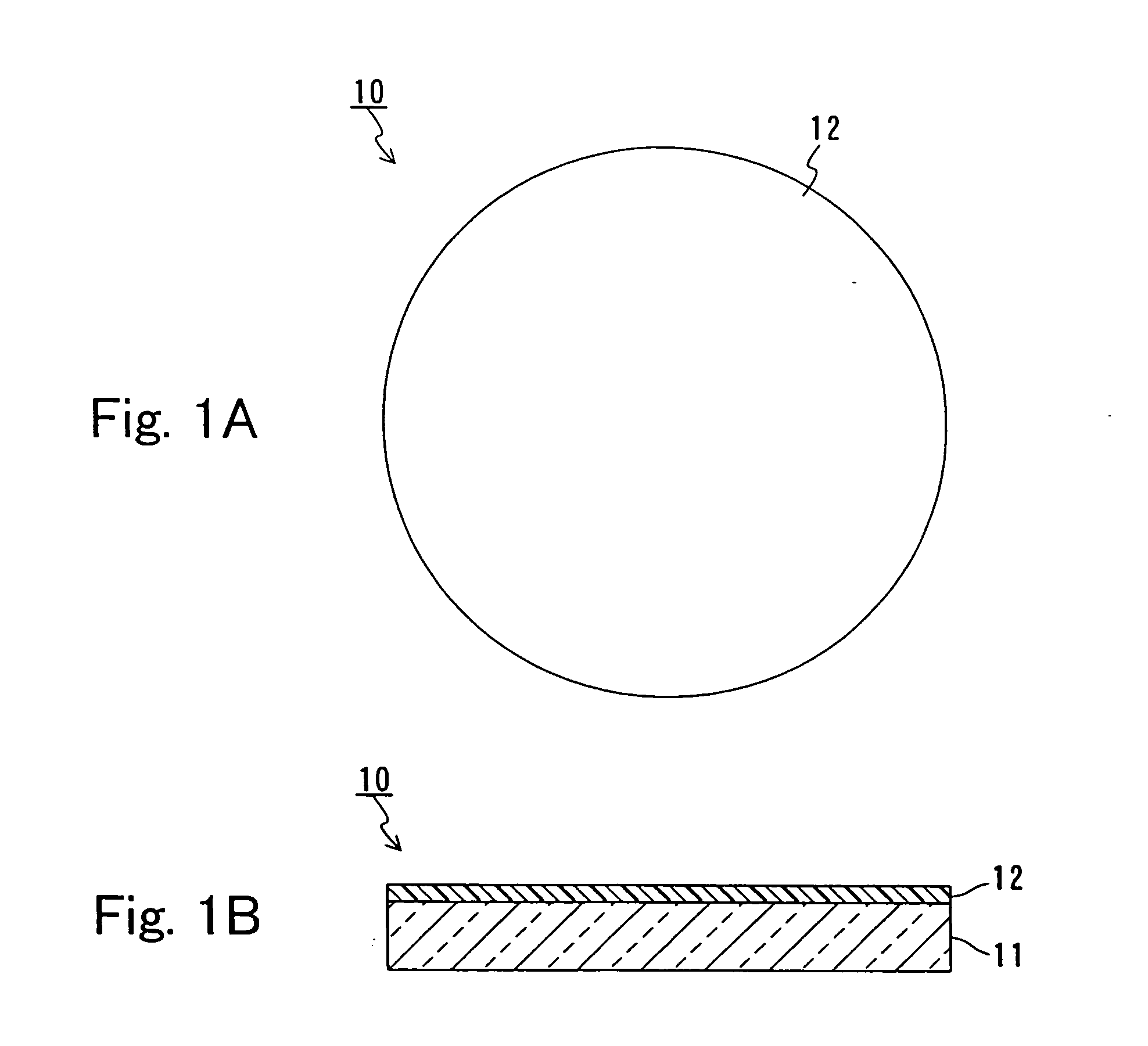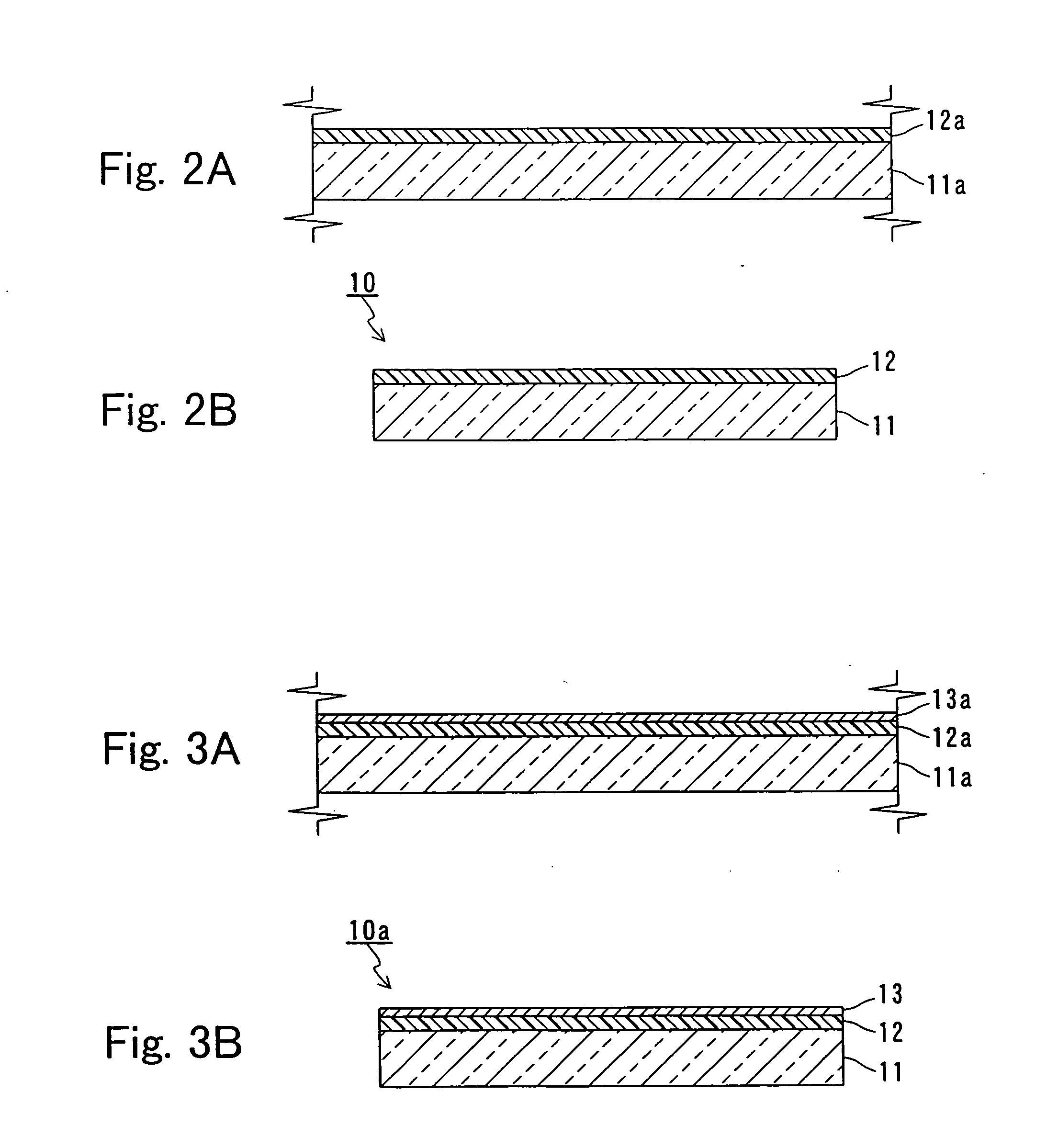Method of manufacturing disk substrate, and method and device for manufacturing optical disk
a technology of optical disk and substrate, which is applied in the manufacture of optical record carriers, glue vessels, record information storage, etc., can solve the problems of reducing the acceptable tilt value of the objective lens, the wavelength of laser light decreases, and the na of the objective lens increases. achieves the effect of thin substra
- Summary
- Abstract
- Description
- Claims
- Application Information
AI Technical Summary
Benefits of technology
Problems solved by technology
Method used
Image
Examples
first example
[0116]FIG. 9 shows a cross-sectional view illustrating processes of the first example. First, as shown in FIG. 9A, a disk-shaped first substrate 91 and a disk-shaped second substrate 92 are prepared. The first substrate 91 is made of polycarbonate formed by injection molding. The first substrate 91 has a thickness of 1.1 mm, a diameter of 120 mm, and a diameter of a central hole 91a of 15 mm. Pits corresponding to an information signal are formed on one principal plane 91a of the first substrate 91. Furthermore, a reflective film (not shown) made of aluminum with a thickness of 100 nm is formed on one principal plane 91a. The pits and the reflective film on one principal plane 91a form a signal area. The reflective film can be formed by sputtering.
[0117] The second substrate 92 is made of polycarbonate or acrylic resin. The second substrate 92 can be formed by a method for cutting a sheet formed by casting, or injection molding. The second substrate 92 has a thickness of 90 μm, a d...
second example
[0127] In the second example, the case will be described in which the diameter of the central hole 92h of the second substrate 92 and that of the central hole 94h of the protective film 94 are varied in the first example. The description of the same components as those in the first example will be omitted here.
[0128] In the second example, as shown in FIG. 11A, the central holes 92h and 94h are made larger than the central hole 91h of the first substrate 91. More specifically, the diameters of the central holes 92h and 94h are set to be 40 mm. In this configuration, the second substrate 92 is not placed at an inner peripheral edge of the first substrate 91. Therefore, a center cone for fixing an optical disk can be prevented from coming into contact with the second substrate 92 during use of the optical disk, and the second substrate 92 can be prevented from being damaged or peeled off. In particular, by setting the inner peripheral edge of the second substrate 92 to be larger than...
third example
[0130] In the third example, the case will be described in which only the diameter of the central hole 94h of the protective film 94 is different from that in the second example. The description of the same components as those in the second example will be omitted here.
[0131] In the third example, the diameter of the central hole 92h is set to be 40 mm, and that of the central hole 94h is set to be 15 mm. According to this configuration, the same effect as that of the second example can be obtained. Furthermore, according to this configuration, the protective film 94 can prevent the resin 103 from adhering to the first substrate 91 and the table 101.
PUM
| Property | Measurement | Unit |
|---|---|---|
| thickness | aaaaa | aaaaa |
| wavelength | aaaaa | aaaaa |
| thickness | aaaaa | aaaaa |
Abstract
Description
Claims
Application Information
 Login to View More
Login to View More - R&D
- Intellectual Property
- Life Sciences
- Materials
- Tech Scout
- Unparalleled Data Quality
- Higher Quality Content
- 60% Fewer Hallucinations
Browse by: Latest US Patents, China's latest patents, Technical Efficacy Thesaurus, Application Domain, Technology Topic, Popular Technical Reports.
© 2025 PatSnap. All rights reserved.Legal|Privacy policy|Modern Slavery Act Transparency Statement|Sitemap|About US| Contact US: help@patsnap.com



